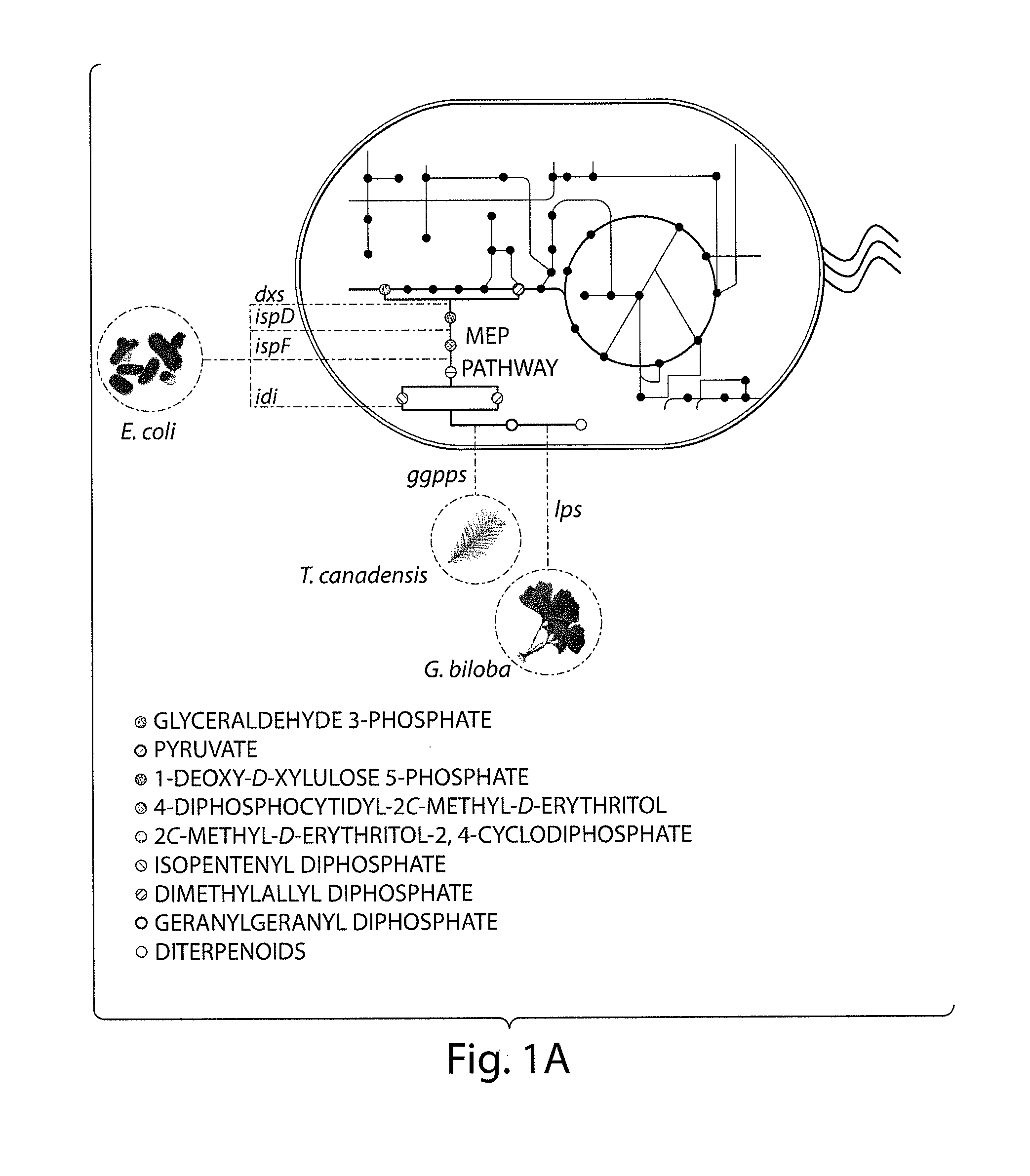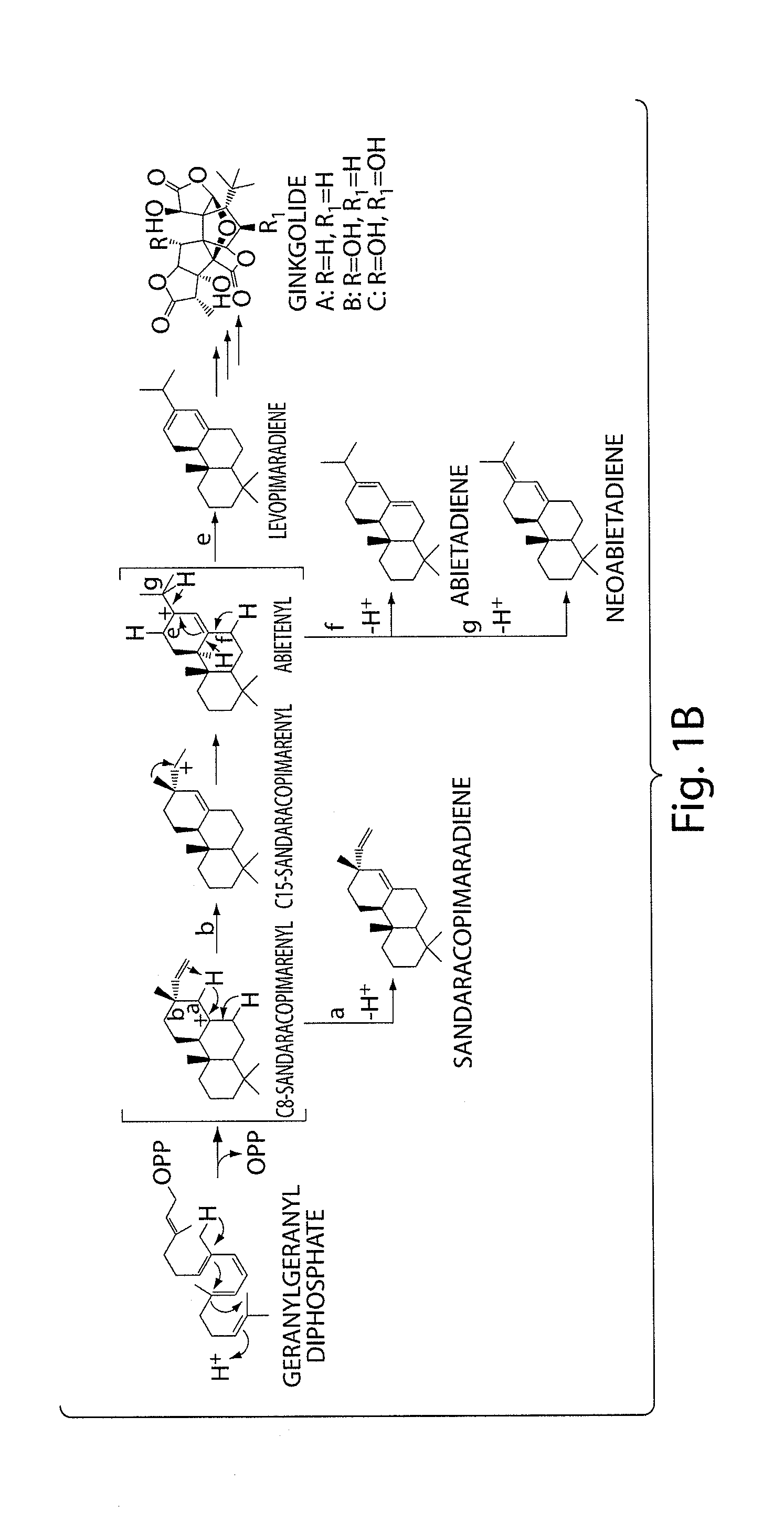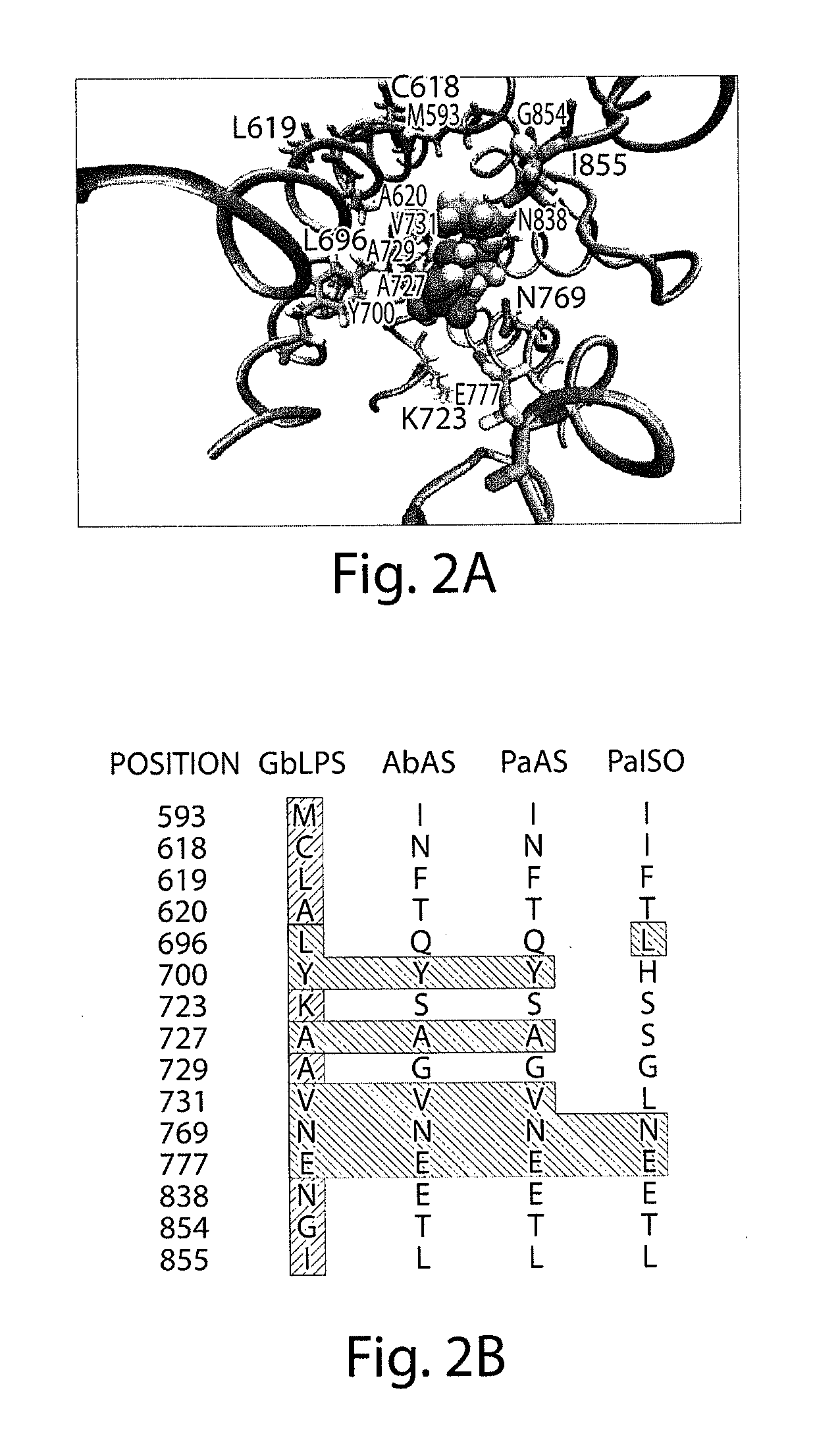Methods for microbial production of terpenoids
a technology of terpenoids and microbial production, applied in the direction of lysine, transferase, enzymology, etc., can solve the problems of limited availability of ginkgolides, slow growth of i>g. biloba /i>, and still far from industrial application, so as to improve the availability of precursors
- Summary
- Abstract
- Description
- Claims
- Application Information
AI Technical Summary
Benefits of technology
Problems solved by technology
Method used
Image
Examples
example 1
Harnessing the Evolvability of a Terpenoid Biosynthetic Pathway for Overproduction and Selectivity Control
Introduction
[0075]The engineering of secondary metabolite biosynthesis in heterologous microorganisms is a promising approach to produce drug precursors in a scalable manner. However, secondary metabolite pathways are typically low-yielding and produce side products. Herein, these limitations were addressed by harnessing the evolvability of a plant-derived terpenoid pathway to efficiently synthesize levopimaradiene, the gateway precursor of the bioactive ginkgolides. Variants of geranylgeranyl diphosphate synthase and levopimaradiene synthase were created to uncover mutations that confer divergent phenotypes in Escherichia coli. Sequence space explorations by random and rational mutagenesis identified combinations of mutations that increased levopimaradiene synthesis up to 19-fold over the wild-type pathway, and reduced the abietadiene and sandaracopimaradiene isomers. In bench-...
PUM
| Property | Measurement | Unit |
|---|---|---|
| time | aaaaa | aaaaa |
| time | aaaaa | aaaaa |
| concentration | aaaaa | aaaaa |
Abstract
Description
Claims
Application Information
 Login to View More
Login to View More - R&D
- Intellectual Property
- Life Sciences
- Materials
- Tech Scout
- Unparalleled Data Quality
- Higher Quality Content
- 60% Fewer Hallucinations
Browse by: Latest US Patents, China's latest patents, Technical Efficacy Thesaurus, Application Domain, Technology Topic, Popular Technical Reports.
© 2025 PatSnap. All rights reserved.Legal|Privacy policy|Modern Slavery Act Transparency Statement|Sitemap|About US| Contact US: help@patsnap.com



